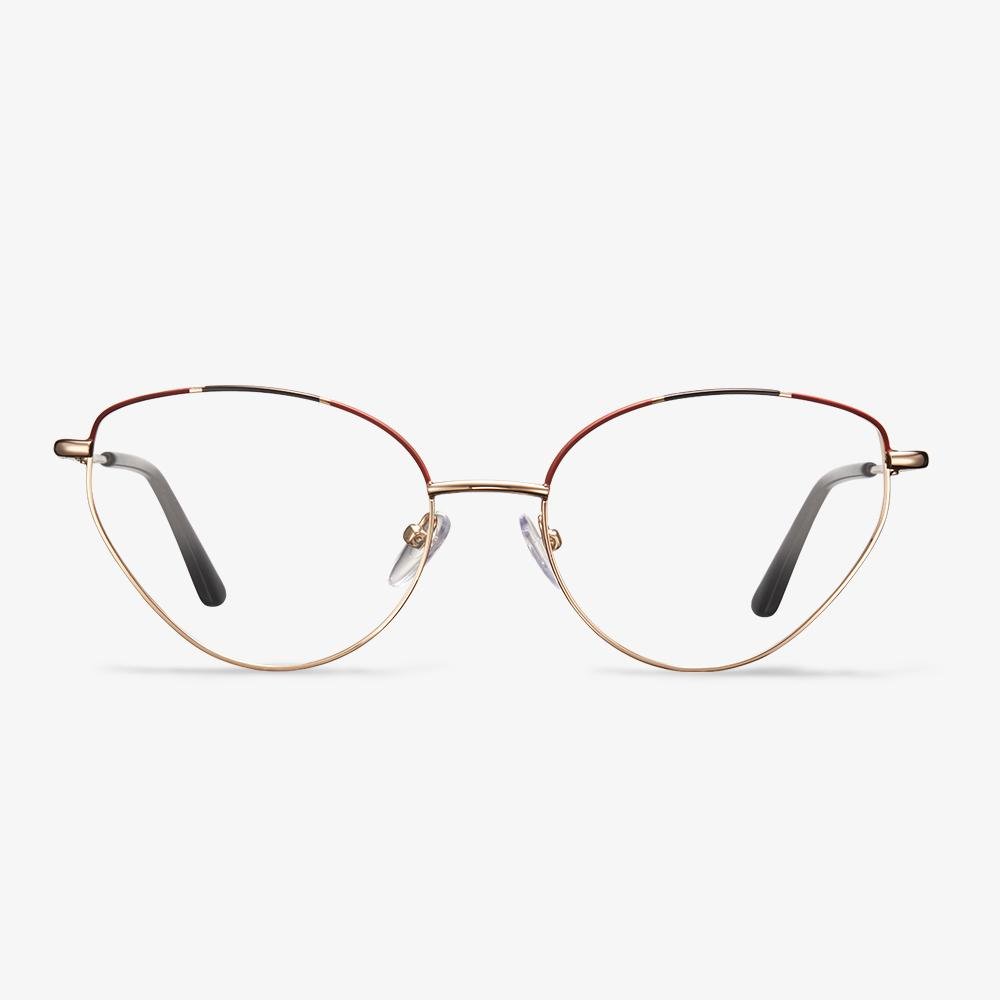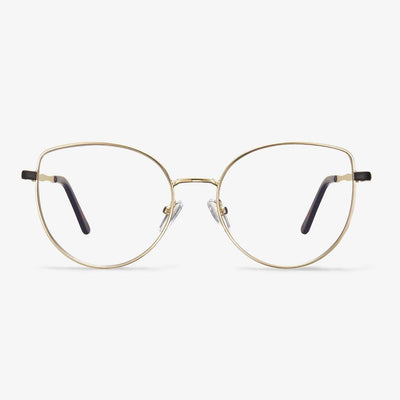VisionKids HappiMegane Anti Blue Light Glasses for Kids
With stylish design, they can effectively block blue, ultraviolet, and other harmful lights, relieve eye fatigue and can maintain natural high-definition visibility. They are safe to wear, with a durable frame, good recycling ability, durable, not afraid of breaking. They are wear-resistant, anti-skid, ergonomically designed to reduce ear pressure. The arc-shaped design fits highly with the root of the ear, effectively anti-skid.
Why is a prescription for glasses different from a prescription for contact lenses?
The frame glasses degrees are the optometric degrees of the eye, and the difference between the frame glasses degrees and the contact lens degrees is mainly due to the different contact distances between the two lenses and the eye. Usually, degrees of contact lenses and glasses need to be converted by a professional through vertex diopter. The conversion formula is Fc=Fs/(1-d×Fs). In the formula, Fc is the diopter of contact lens, Fs is the diopter of glasses frame lens, and D is the distance between frame glasses lens and cornea. Assuming that the prescription of frame glasses is -4.00d and the distance between lens apex is 12mm, the prescription of contact lenses is -4.00/ [1-0.012×(-4.00)] = -3.82d.
Does the phone screen have irregular color bars when wearing polarized lenses?
It is mainly the special properties of the polarizing film. The polarizer is able to see the internal stresses in the plastic, so when we usually look at the edge of the mobile phone screen, it will have a colored stripe or a black piece, which is mainly caused by the uneven edge pressure when the screen is installed. It's mostly a matter of light and shade. Wearing a polarized lens to see the LCD screen a tilt will find that the screen darkens, mainly because the polarizing lens can absorb light in a certain direction. The LCD screen is a one-way light (different from sunlight), so it is absorbed, so it is found to be dark.
How to Choose Glasses for Diamond Face Shape?
Oval glasses: Oval glasses in the rimless or half-rim are complimenting glasses frames for diamond face shape. So, if you are looking for glasses for diamond face shape, try these.
Browline: The last glasses for diamond face shape we want to mention is the browline glasses. The double bridge that resembles aviator glasses seems one of the attractive choices of glasses for diamond face shape having a bit of detailing on browline with deep dark shades, half rim, tortoise-shell and other designs.
Protect the lenses of your safety glasses.
Scratches can be caused by damage at work, aging, improper care, improper cleaning, or improper storage. Whatever the cause of a scratched lens can affect vision quality through the polycarbonate, causing eye strain. Make sure the safety glasses lenses are replaced in time when they are scratched.
Orthokeratology lenses are used for myopia control.
The effect of the orthokeratology lens in controlling the increase of myopia in teenagers has been unanimously affirmed by the ophthalmology industry at home and abroad. In February 2006, an authoritative ophthalmological journal published a review of the retarding effect of rigidity breathable orthokeratology lens on the progression of myopia in children. This paper reviews the literature on orthokeratology and myopia in the past 30 years and points out that rigidity breathable orthokeratology can prevent or alleviate the progress of myopia, the mechanism of which is that rigid breathable contact lens can inhibit the progress of myopia by providing clearer retinal image quality. Medium and high concentration of atropine will affect students' near-use vision, while low concentration of atropine has not been used clinically in China, so orthokeratology lens has become one of the known myopia control methods with the best statistical effect. In three to five-year case studies, orthokeratology lenses alleviate a 40 to 60 percent increase in myopia compared with wearing a frame lens or a soft contact lens. Other studies have found that 65 to 70 percent of orthokeratology lens wearers show little or no axial length increase.
What is an MR lens?
MR is the brand name of optical lens raw materials produced by Mitsui Chemicals in Japan. MR series is available in three different refractive indices (1.60, 1.67, 1.74): MR-7, MR-8, MR-10, and MR-174. MR-7 and MR-10 have higher thermal deformation temperature and excellent dyeing, which are widely used in the field of sunglasses. MR-8 has the most balanced performance index and is suitable for the production of lenses of any strength. It has the highest market share in lens materials with a refractive index of 1.60. MR-174 is a high refractive index lens material, which is mainly used in the production of ultra-thin lenses.


















































